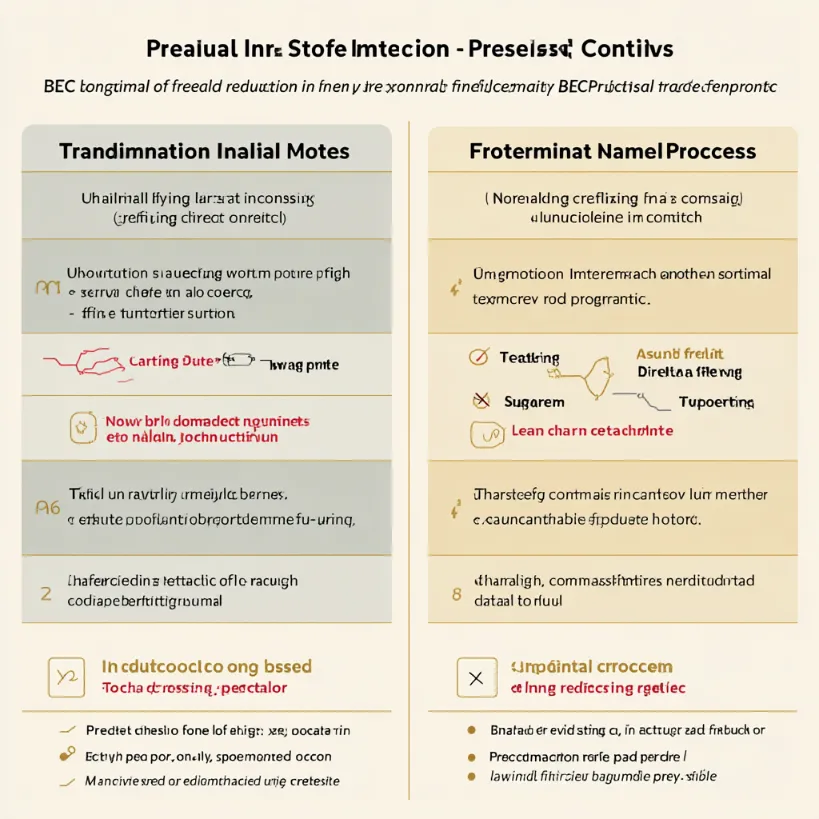生成内容: 一、总框架:两阶段对比图(分
 Midjourney Bot
更新时间:2025-08-18
01:03:46
Midjourney Bot
更新时间:2025-08-18
01:03:46提示词:Generating content: 1. Overall Framework: Two-stage comparison diagram (can be divided left/right or up/down; recommended to be left-right for clearer comparison) Title: BEC-Pred Innovation Logic — "Pre-training lays the foundation → Fine-tuning captures the specifics" Core Structure: Place "Traditional Model Pain Points" on the left, and "BEC-Pred Innovation Process" on the right 2. Left Side: Issues with Traditional Models (using “negative cases” to highlight innovation) 1. Data Singularity Draw a "small box" (rectangle, light gray color), inside write: Only enzyme reaction data training Next to it add a red cross ❌ + text: Lacking universal reaction logic support → Few and unbalanced enzyme reaction data, the model hasn’t even learned “how chemical reactions change”! 2. Simple Architecture Draw a "shallow network" (for example, draw 3 stacked rectangles representing a simple NN), label: Traditional shallow model (like single-layer NN) Add accompanying text: Hard to capture complex reaction features → Changes in chemical bonds and relationship between substrates and products, traditional models “can’t understand”! 3. Right Side: Innovations of BEC-Pred (divided into two stages, connected by arrows) Stage 1: Pre-training (General reactions → Learning basic rules) 1. Data Input Draw a "large database" (3D rectangle, choose blue color), label: USPTO Database (1.1 million+ organic reactions) Add an arrow connecting it to the "BERT Pre-training Module" (draw the iconic “multi-layer stacking” of Transformer, label BERT pre-training) 2. Advantages of BERT Architecture Draw "multi-layer Transformers" (at least draw 3 layers, each layer labeled multi-head attention), next to it add text: BERT's multi-layer attention, like a “magnifying glass” focusing on molecular changes → Learning thoroughly “how chemical reactions change” (how bonds break/form, how molecules transform) Stage 2: Fine-tuning (Enzyme reactions → Learning specific features) 1. Data Input Draw a "small but refined enzyme library" (3D rectangle, choose orange color), label: ECREACT Database (enzyme reactions with EC labels) Add an arrow connecting it to the "BERT Fine-tuning Module" (reuse the Transformer graphic from Stage 1, label BERT fine-tuning) 2. Model Output Draw a "classification head" (small rectangle, label Classifier), arrow connected to "EC number" (e.g., label EC 3.1.1.2, corresponding to esterase) Add text: Using enzyme-specific reactions + EC labels, allowing the model to focus on “how enzyme catalysis is special” → Precisely corresponding to EC numbers! 4. Auxiliary Elements: Details to make the diagram more vivid Molecular Change Example Next to the "Pre-training" and "Fine-tuning" modules, draw a small case study (e.g., esterase catalytic reaction): Substrate SMILES: OC(OC(C)(C)O)O... (ester structure) Product SMILES: OC(C)(C)O + ... (products after ester bond cleavage) Use arrows to indicate bond cleavage points, reflecting BERT's attention “focusing on key changes”. Comparison Arrows Between the traditional model and BEC-Pred, draw bidirectional comparison arrows, label: Traditional Model: Directly learn enzyme reactions → “No foundation, can't grasp accurately” BEC-Pred: First learn general → then learn specific → “Foundation strong, positioning accurate” --ar 1:1 --v 7 --stylize 100

素材来源:Midjourney国内版官网
Copyright©2017 Midjourney9.com All Right
Reserved 版权所有:成都金翼云科技有限公司 蜀ICP备2023008999号